Energy-saving heating systems: how and what can be saved?
Heating industrial facilities and houses is quite expensive. Energy-saving heating systems will help reduce payments costs, thanks to which you can save significant money without giving up comfortable indoor conditions.
We offer to understand what options exist to improve the energy efficiency of the house, what are the features of their application. A detailed overview of energy-saving technologies will help to decide on the feasibility of arranging one or another type of heating system.
The content of the article:
Ways to increase energy efficiency at home
It is possible to reduce the costs of energy used for heating by various methods:
- increasing the energy efficiency of the building;
- application of the Smart Home system, as well as other automation, which allows minimizing costs;
- reduction of electric losses with the help of radiators and other devices;
- increased efficiency of heating boilers or furnaces;
- using environmentally friendly forms of energy (firewood, solar panels).
For best results, a combination of two or more options can be used.
Even the most reliable and high-quality heating system will not bring much benefit if a large-scale heat transfer occurs in the house, so measures should be taken that will prevent leakage of heat through slots and open windows.
It is important to take simple but effective steps, covering the floors, walls, doors, ceilings, window frames with insulating material. In addition to regulatory insulation, additional insulation can also be placed. This will further reduce heat loss, thereby increasing the energy efficiency of the building.

Typically, the greatest heat loss occurs through walls, attic flooras well as gender on lags. These sites require high-quality thermal insulation. To prevent heat leakage through the windows, you can use shutters that close at night.
Smart Home Management System
Automatic devices of the complex "Smart House" able to make a huge contribution to the economy of energy used to generate heat.
The maximum level of efficiency can be achieved by choosing a system equipped with a number of additional functions, namely:
- weather-dependent control;
- indoor temperature sensor;
- the possibility of external control with the provided data exchange;
- priority of contours.
Consider all of the above benefits in more detail.
Weather dependent temperature control in the house involves adjusting the level of heating of the coolant depending on the outdoor temperature. If frost has hit the street, the water in the radiator will be slightly hotter than usual. At the same time, during warming, heating will be less intense.
The absence of such a function often leads to an excessive increase in air temperature in the rooms. This not only leads to cost overruns, but also not too comfortable for the inhabitants of the house.
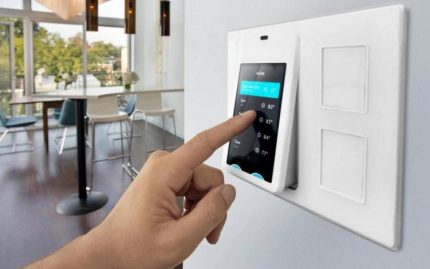
Most of these devices have two modes: “summer” and “winter”. When using the first, all heating circuits are switched off, while only devices designed for year-round use, for example, heating the pool, remain functioning.
Room temperature sensor needed not only to control the maintenance of automatically set temperature. As a rule, this device is combined with a regulator, which allows you to increase or decrease the heating if necessary.
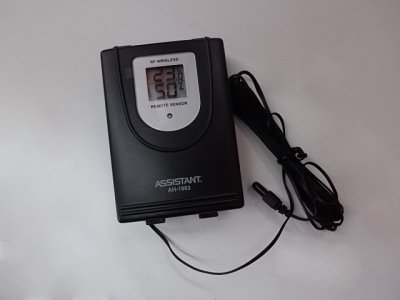
The temperature controller can be programmed to lower the temperature in the rooms for certain hours, for example, when the inhabitants of the house go to work, which contributes to significant savings in heat consumption.
Priority heating circuits with the simultaneous operation of various devices. So, when the boiler is turned on, the control unit disconnects auxiliary circuits and other devices from the heat supply.
Due to this, the boiler room power is reduced, which allows to reduce fuel costs, as well as evenly distribute the load for a given period of time.
System climate controlconnecting the control of air conditioning, heating, electricity, ventilation into a single network, not only increases comfort in the house and minimizes the risk of emergency situations, but also saves energy.

External management - The ability to transfer data to smartphones allows owners to monitor the situation, so that if necessary, promptly make adjustments. One such solution is GSM module for heating boiler.
Cutting costs with appliances
The heating system is considered to be the most effective, allowing to achieve comfortable heating at a minimum coolant temperature. To achieve this, it is best to use a circuit. water floor heating.
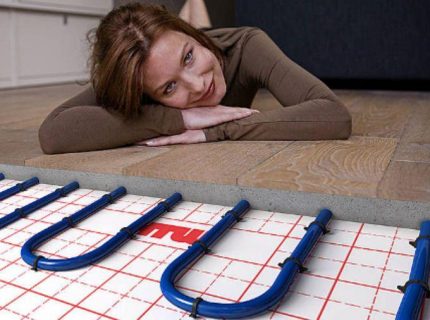
Unfortunately, in harsh climates, warm floors are often not able to compensate for heat loss, especially if the house has large glazed spaces. This is because the maximum allowable temperature of the floor covering has a hard limit: it should not exceed + 27 ° C.
The best option in this case is a combination of a warm floor with modern radiators, which can be connected from below from the floor or wall, which eliminates the not too aesthetic piping from the interior.

Based on the principle of energy efficiency, it is better to dwell on the collector-beam two-pipe radiator heating circuit. In this case, a special heating branch is carried out in each room - the supply and return element.
Such a system allows you to maintain your temperature in each room, minimally affecting the neighboring rooms.
Energy efficient boilers and furnaces
To save energy from fossil fuels, it is worth replacing the traditional heater with an environmentally friendly and energy-efficient stove (oil or gas) or heating boiler. In the first case, it is important to pay attention to the duct system that distributes the heated air in the rooms.
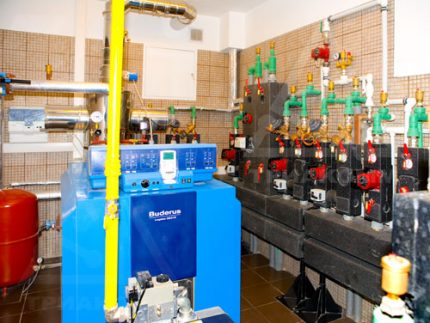
When using boilers, it is also necessary to consider the communications through which water will pass, going to radiators or underfloor heating systems.
When choosing boilers or stoves, it is important to consider the following factors:
- Ventilation. A boiler or furnace equipped with a hermetic combustion chamber must be blown with a stream of outside air. This prevents possible air pollution within the premises and reduces the likelihood of external air masses entering the house.
- The presence of electric ignition. Similar models are considered much more effective options with an ignition flame.
- Capacitive heat exchanger and condenserthat allow you to accumulate excess energy, which allows you to save on the production of new calories.
Although modern furnaces and boilers operate on fossil fuels (fuel oil, propane), they are still considered energy-efficient and environmentally friendly devices. For their functioning, a minimal amount of fuel is sufficient, and the number of harmful substances that are released during combustion is negligible.
The use of clean fuels
Priority is now being given to the development of alternative energy using renewable resources.
Among the most common options are the following:
- wood;
- heat pumps;
- solar energy processing devices.
In addition, other methods of energy-saving technologies are being developed, for example, wind turbines.
Wood stove heating
For centuries, wood has been widely used for heating homes and cooking: it is a renewable resource available to most people. In order to obtain heat, you can use not only full-fledged trees, but also wood waste, such as brushwood, twigs, wood shavings.
To burn such fuel, special wood-burning stoves are designed, which can be a prefabricated structure of cast iron or welded - of steel.
Disadvantages of wood stoves
At the same time, such devices have a number of disadvantages that prevent their widespread use:
- Wood-burning stoves are considered the most environmentally friendly heaters operating on renewable energy sources: when burning wood, a large amount of combustion products enters the air.
- The procurement of firewood, carried out independently, requires a significant amount of work: a tube of wood, sawing and chopping wood. In addition, the furnace must often be cleaned of accumulated ash.
- Wood-fired heating devices are also considered the most fire hazardous heaters, since if the chimneys are not properly serviced, a fire can occur in them.
- The stoves heat the room where they are located, while the air in other spaces can remain cold for a long time.
- Wood heaters are not suitable for installation in ordinary urban housing - some models can also be installed in apartments, however this process requires coordination and execution of a large number of documents.
At choosing a wood stove you need to give preference to an effective modern model. Some options have special devices - catalytic converters, allowing to burn incompletely burned liquids and gases, which increases efficiency and reduces emissions of harmful elements.
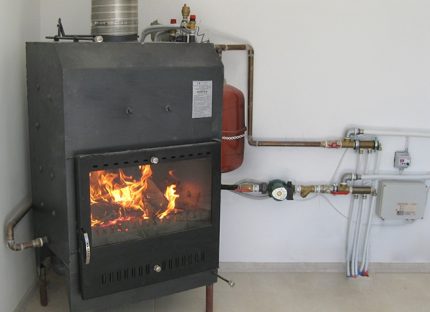
Some modern wood-burning stoves also have special partitions that are located above the cooking chamber. They direct the remaining gases and liquids into the fire, increasing the efficiency of combustible materials. Similar designs can also reduce creosote accumulation.
For more uniform heating, you can think about installing a gas-wood furnace, which allows you to use two types of fuel simultaneously. It is also possible to install outdoor wood-burning stoves: with their help, water is heated, which circulates through the heat exchange system, heating the premises.
Two varieties of heat pumps
Such units have long earned great popularity: this is one of the most effective types of home heating, representing a minimum of environmental hazard.
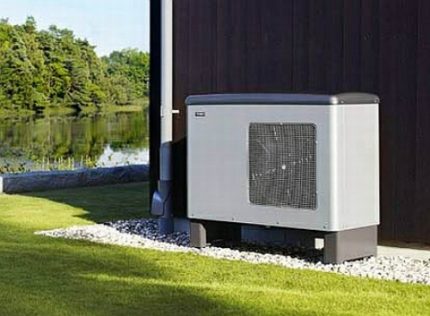
The models on the market are of two types:
- Air heat pumps. Devices equipped with special devices capable of capturing heat from the atmosphere even on cold days (up to -20 ° C) and then distributing it around the house with the help of laid air ducts.
- Geothermal Heat Pumps. Such devices allow you to take advantage of the warmth of the soil. To do this, in the ground below the freezing level (usually below 1.2 m), horizontal laying is carried out by rings. If the area of the plot is too small, then the pumps are located in vertically drilled wells, the depth of which can reach up to 200 m. Details on the organization of such heating are written in this article.
Although electricity is needed for the operation of heat pumps, these devices are recognized as energy-efficient, since they extract much more heat compared to the resources they spend - one in three for air, one in four for geothermal devices.
At the same time, the devices do not pollute the air and are completely fireproof. The advantage of heat pumps is their ability to work in reverse mode, that is, not only to heat, but also to cool the air. Water heaters can also be installed on geothermal devices, providing water heating up to + 60 ° С.

New and reconstructed houses can be equipped with both thermal and geothermal appliances, while in old houses it is only possible to install a pump of the first type.
Using heat pumps, you need to consider that their effectiveness depends on the difference in temperature between the consumer and the source. In case of frost, you have to use equipment with a significant excess of power, or use additional devices for heating the house, for example, energy-efficient boilers or stoves.
Solar energy-saving devices
Recently, great importance has been given to the development of technologies that allow the use of solar energy for domestic and industrial purposes.
Solar air collectors
A simple and economical method of heating a building, which is most often used as an additional source of electricity. In this case, special devices are mounted on the roof on the south side of the house, so that even in winter sunlight will fall on them.
Once the temperature limit is reached inside the chamber, a tiny fan responsible for heat transfer automatically turns on in it. The air from the rooms begins to pass through the collector, and "taking" the heat, again flow into the house.
Depending on the energy efficiency of the structure and the amount of sunlight, the collector can heat a space of 44 square meters. m and more.
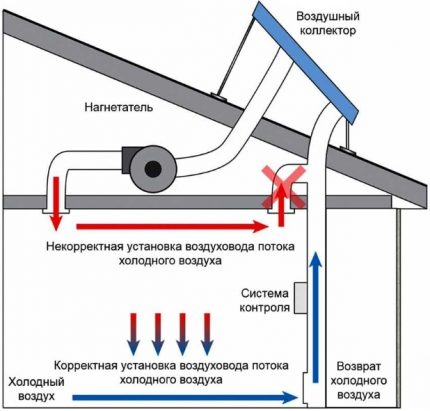
Long-life collectors, the maintenance of which requires a minimum of funds, are suitable for installation in new or reconstructed houses.
Such devices are an environmentally-friendly option for heating buildings, however, before installing them, careful calculations will be required to correctly determine the size network and the planned capacity of the collectors.
Depending on the design, the solar modules can operate completely autonomously or use a small amount of electricity from the network. In the latter case, you will need to make the appropriate changes to the wiring of electrical communications.
Solar water collectors
A more complex version of solar devices are solar hot water systems. Their design includes the collectors described above, mounted on the roof of the building, an accumulation tank, which is most often installed in a utility room (basement, closet), as well as pipes connecting them.
The liquid coolant, which is used as water or non-toxic antifreeze, is pumped into the solar collectors by the pump, where the temperature of the liquid rises significantly. After that, it goes back to the tank, from where heat is transferred through the heat exchanger to the water in the special tank.
A well-heated liquid is used for domestic use, for example, for heating a warm floor or flow system.

Solar systems for heating buildings operate silently, without emitting harmful substances. They can be used to work in different climates, but their effectiveness will vary depending on the specific region - this indicator requires verification before installation.
The energy-saving heating scheme is suitable for both new buildings and old buildings, it is only important to consider that a small amount of electricity is required for the operation of electronic control devices and pumps.
The main disadvantage of such systems is the production of excess hot water in warm seasons.In a hot summer, this can be a problem: as a rule, excess heat is discharged through the removal of a pipe buried in the ground.
Passive solar heating
An economical way to heat a house is to use a passive solar heating system. For such designs, additional communications and the use of additional mechanical devices, for example, pumps or fans, are not required.
The only thing required for heating is a large number of clear days and low sun, which gives heat to the windows located on the south side.
As a rule, during the day, internal heat is absorbed by brick or gypsum walls, as well as concrete floors. At night, it is released to maintain a comfortable temperature in the building.
For such a house to be energy-efficient, it must be airtight and well insulated. To do this, special low-emission windows are used that store heat in the winter and reflect it in the summer.
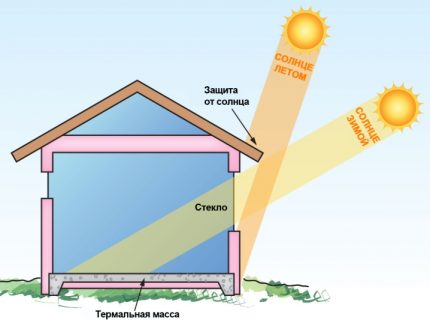
Passive solar option in sunny areas saves 50-79% of heating costs. It is natural that the construction of such a house will cost the owners much more than a conventional building, but in the long term the benefits of such a construction are unambiguous.
Unfortunately, in the Russian climate, this method is not very popular because of the low temperatures at which more heat is lost through the windows than comes from sunlight.
Solar heating is a promising area, which is gaining more and more popularity every year. The use of solar systems is especially important for warm regions. Our site has a series of articles devoted to solar heating systems.
We advise you to familiarize yourself with:
- Solar energy as an alternative source of energy: types and features of the use of solar systems
- Solar panels for summer cottages and houses: types, principle of operation and calculation procedure for solar systems
- How to make a solar collector for DIY heating: a step-by-step guide
Conclusions and useful video on the topic
The video below describes one of the most effective ways to save energy - the use of solar collectors.
There are many different options for heating systems that consume a minimum of fossil raw materials. The main task of residents is to choose the most optimal scheme of energy-saving heating.
Although the installation of such structures will require some funds, they will quickly pay for themselves, since they help to effectively save on heating costs.
Have experience using energy-efficient heating systems? Please share information with readers. Comment on the publication, participate in discussions and ask questions on the topic. The feedback block is located below.

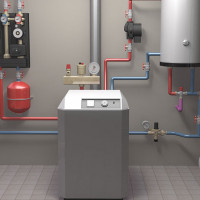 Economical heating of a private house: choosing the most economical heating system
Economical heating of a private house: choosing the most economical heating system 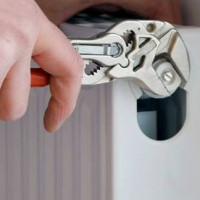 Removing air from the heating system: how to bleed air
Removing air from the heating system: how to bleed air  How to pressure test a heating system with your own hands
How to pressure test a heating system with your own hands  Distribution comb of the heating system: purpose, principle of operation, connection rules
Distribution comb of the heating system: purpose, principle of operation, connection rules 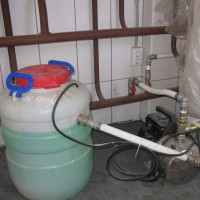 Filling the heating system with coolant: how to fill with water or antifreeze
Filling the heating system with coolant: how to fill with water or antifreeze  Features of flushing the heating system: an overview of the best ways
Features of flushing the heating system: an overview of the best ways  How much does it cost to connect gas to a private house: the price of organizing gas supply
How much does it cost to connect gas to a private house: the price of organizing gas supply  The best washing machines with dryer: model rating and customer tips
The best washing machines with dryer: model rating and customer tips  What is the color temperature of light and the nuances of choosing the temperature of the lamps to suit your needs
What is the color temperature of light and the nuances of choosing the temperature of the lamps to suit your needs  Replacement of a geyser in an apartment: replacement paperwork + basic norms and requirements
Replacement of a geyser in an apartment: replacement paperwork + basic norms and requirements
I regretted that I did not make a warm floor for the whole house, but only in the hall, corridor, kitchen and bathroom. At first it seemed very expensive. And now, with my hindsight, I understand that it was possible to take the boiler and low-temperature.
But already as it is.I installed an electronic programmer, set up a weekly schedule of turning on and off according to the room temperature. And also when we are at work, the temperature is maintained at 17ºС. An hour before arrival, the boiler turns on and warms up the house to a comfortable 23ºС.
I would have installed a little less to save, but the female half of the family goes into denial))
Wood stoves can hardly be included in the list of ways to save on heating your home. Firstly, more than half of the population of our country lives in apartments. Ovens are excluded there. Secondly, the cost of a cubic meter of firewood even without delivery at the moment is such that it doesn’t smell like saving, it’s easier and cheaper to burn gas or even electricity all winter. In general, in my opinion, the very first and surest way to save on heating is to minimize heat loss in the room, otherwise everything else is simply meaningless.